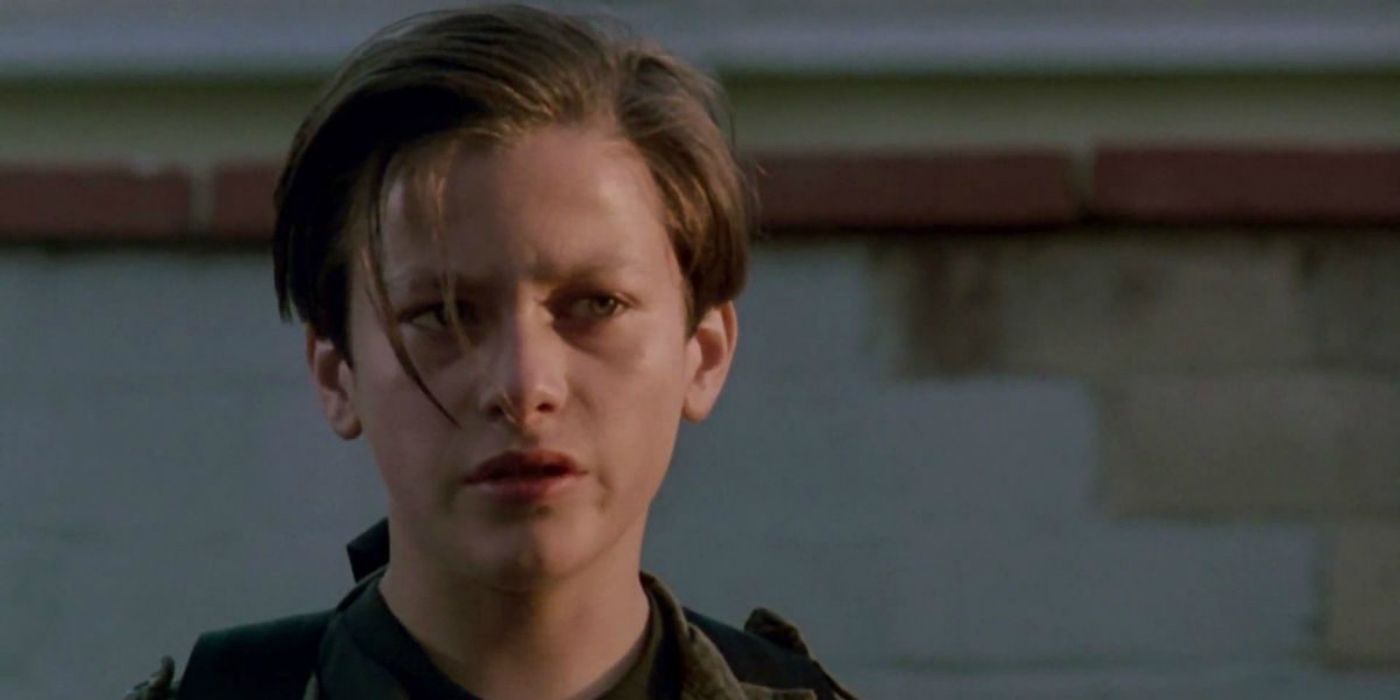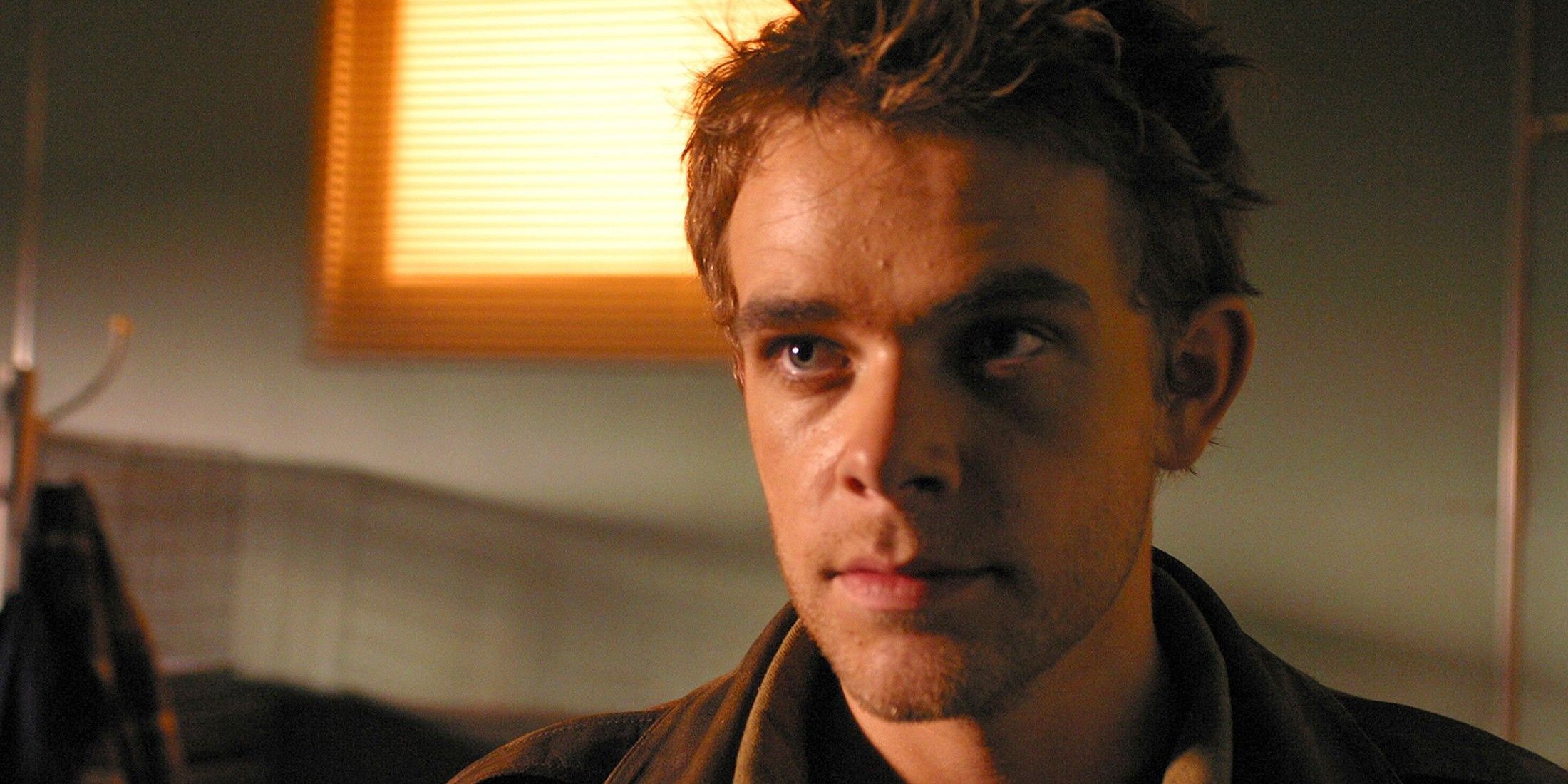John Connor is a constant and (usually) integral element in the Terminator films, but his presence in the famous series is continually retconned by each new sequel. 1984’s The Terminator told the simple tale of a future AI defence system’s attempt to retroactively win a post-apocalyptic war — by traveling back through time and killing the mother of their greatest enemy: John Connor. Predictably, the plot failed, and John Connor, humanity's last salvation, became a core character in the franchise.
The first film resulted in a triumphant blend of science fiction, horror, action and neo-noir, and became a sleeper hit at the box-office, making a worldwide $78.4 million. But alternate realities, shifting creative visions and general contradictions between the next five Terminator sequels have taken an unquestionable toll on the series' reputation. By the time of Terminator Genisys, the closed time loop of the original film seemed an incredibly quaint idea. The audience's confusion culminated in an underwhelming box office for Terminator 6, 2019’s Terminator: Dark Fate – the fallout of which has put the 35-year old series on hold.
It’s clear that beyond constant re-casting of John Connor, no writer involved in the Terminator franchise has seemingly had a concrete vision for the character, whose presence dwindled rather than increased as the sequels progressed. Played by five actors in three timelines, it’s difficult to keep track of this character, whose importance has been varyingly stressed, cemented, twisted and disregarded across all six movies.
Terminator 2: Judgment Day
Creator James Cameron designed Terminator 2: Judgment Day to essentially remake the dirt-cheap first film into a more lavish production, reuniting himself with stars Arnold Schwarzenegger and Linda Hamilton. Joining them as 10-year-old John Connor was Edward Furlong, who to this day remains the most famous incarnation of Connor. Even in this reasonably concise movie, the plot isn’t safe from paradoxes and other temporal flaws that fans like to pick apart.
Set in 1995, the CPU of the first film’s T-800 is acknowledged as Cyberdyne’s key step towards Judgment Day: parts of the damaged terminator from the first film provided — via reverse-engineering — the technology used by Cyberdyne Systems to create Skynet. This elaborates on the closed time loop idea established in T1, but the concept is quickly blown open, as the “No Fate” idea firmly throws Judgment Day and John’s future into a deliberate haze. As Sarah Connor realises the apocalypse she spent the lst decade preparing John for is uncertain, Cyberdyne Systems and engineer Miles Bennett Dyson become her target of destruction.
An open-ended Terminator film like this presents a variety of problems. Squarely, Cyberdyne cannot be destroyed; Judgment Day has to happen so that adult John Connor can meet his father, Kyle Reese, and send him back in time to 1984, at which time Reese meets Sarah Connor and fathers John. It's a predestined paradox. The Terminators themselves must also emerge from somewhere. A deleted "happy ending" for T2 depicting an aged Sarah Connor and a hopeful future certainly would have made all of that impossible, as John by that point should have gone the way of Marty McFly. It was rightly cut from the movie due to its lack of ambiguity.
Terminator 3: Rise of the Machines
For Terminator 3: Rise of the Machines, Jonathan Mostow replaced James Cameron as director, and Nick Stahl replaced Edward Furlong as John Connor because the latter vetoed reprising the role due to numerous personal issues. Stahl, however, does an admirable job portraying a downbeat John Connor — now a drifter from fearing another attempt on his life by Skynet.
Set in 2004, Terminator 3: Rise of the Machines is a straight sequel with some head-scratching issues. In the opening narration, John says that he was 13 (not 10) during the events of T2, which was a fair attempt to better reflect Furlong’s age at the time of filming. Given John’s established birthdate of 1985, this would push T2’s setting forwards to ’98 but contradict Judgment Day’s original ‘97 due date. Alternately, T3 may have sneakily pushed the first film’s events back to 1981, which would nicely align with T2’s ’95 setting and put John’s age at 22 in 2004. The latter is more likely, given that Stahl was 22 when he was cast.
T2’s timeline may have been retained, but it is countered in other respects. The series’ idea of fate — fluid in Cameron’s films — is instead solidified. Judgment Day is rendered inevitable and John is a staunch believer in destiny, growing to believe that his mission in life is to stop rather than face the war, before he is proved incorrect in the film’s dark ending. It’s a turnaround on the series’ themes, but it’s justified considering John’s arc. He is motivated to recall his Mother’s training and evolve from aimless drifter to military leader. The off-screen death of Sarah allowed John a true spotlight in the movie, and indicated that he would be the hero from here on out. T3 attempts a natural evolution of the character, beginning to pay off what Kyle Reese had foretold in the original film.
Terminator Salvation
With a new cast, new director, and new setting to work with, Terminator: Salvation was thought of as a soft reboot at the time of its release, but it in fact does little in the retcon department. In another recast, A-lister Christian Bale takes up the Connor legacy, continuing John’s arc as an insecure leader. John’s development is bolstered by his wife Katherine Brewster, Sarah Connor's tapes (which she recorded for her son before her death), and cyborg Marcus Wright — a new character who gives him a second chance at life and the inspiration to become a leader.
In terms of visual consistency, Salvation disregards the dark, nocturnal future for a visual palette more resembling Mad Max. And in the vain of T3, T4 couldn’t resist taking liberties with the timeline. While never made explicit, it’s assumed that Salvation follows T3’s iteration of Judgment Day. Set 14 years later, 2018 becomes almost a replacement for the series’ centre year of 2029, as several key events happen a decade earlier than they should have.
The evolution of Skynet is nicely displayed; T-600s and rubber-skin cyborgs are superficial but interesting touches that demonstrate an intrigue and reverence for the Terminator mythos. However, a main plot-point concerns the development of the T-800, which manifests as a "T-RIP" during the film’s climax. If Skynet’s technology has advanced to this point in 2018, then the 800 models would be somewhat obsolete by 2029. Its introduction drives a wedge into the logic of the first film, in which Reese stresses these particular Terminators are “new” in 2029.
Speaking of Reese, he meets John in T4 a full decade before he’s supposed to, and is keen to join the Resistance under him. This aligns with the established lore, but being so young at 18, it’s implied that Kyle will become a son figure to John in the coming years, which makes for an odd paternal-symbiosis between the two.
Terminator Genisys
After Salvation’s critical mauling, the age of scrapping canon and rebooting tired franchises began to flourish — and the Terminator brand was far from safe. Perhaps influenced by 2009’s Star Trek, Terminator: Genisys used the series’ time-travel aspects to create an internal retcon, causing an alternate reality unhindered by the baggage of four other movies. Despite this freedom, however, the film was not saved from being brain-meltingly confusing.
T5 brought Schwarzenegger’s aged T-800 back into the fold, but it flat-out refused to maintain a temporal space for the majority of the narrative. John, Sarah, Kyle and a bunch of old and new Terminators fly across time with the years 2029, 1984, 1973, 2005 and 2017 all thrown together — and John Connor crawled out the least unscathed.
Beginning in 2029, Genisys initially feels like a loyal follow-up to Salvation, as John and Kyle fight together in the Resistance. That is until Kyle Reese is sent back to 1984, and Skynet, in the form of Matt Smith, transforms Connor from human war hero to the T-3000 — a nanomachine now hell-bent on annihilating his former parents. Needless to say, this is the biggest and oddest alteration to John. Making John a cog in the Skynet machine is an interesting “what if” scenario, but ultimately, reducing him to little more than a mindless robot is deflating and dismissive of the Terminator series’ lore. Twists are welcome, but Connor’s transformation and eventual death has little emotional weight, and consequently feels like a vapid downward spiral from which he can never return.
John is seemingly destroyed in the climactic battle by a prototype time machine, but actor Jason Clarke has said that his character was intended to continue in further Terminator films. What the team behind Genisys would have done to further disrupt the mythology is anyone’s guess. Predictably, the planned sequels never materialised.
Terminator: Dark Fate
The sixth installment in the series, Terminator: Dark Fate, was even worse for John Connor. Deadpool director Tim Miller sat in the director's chair for the fifth sequel/third Terminator reboot that saw Cameron, Schwarzenegger and Hamilton reunite for the first time since T2. For the few who did see Dark Fate (it only grossed $233.7 million), there was a major surprise awaiting them in the opening scene. Dark Fate picks up on the Connors in 1998 vacationing in Guatemala (featuring a CG John, with the help of a returning Edward Furlong). Their peace is cut short by a T-800 who intrudes the scene and shoots John into a bloody mess, rendering his character useless and nullifying the sacrifices made for him in the first two films. The original mythology is retconned; the destruction of Cyberdyne takes John and Skynet out of the equation, being replaced with Legion and Dani — a new hope for a new resistance.
While Terminator: Dark Fate represented a refreshing change of pace for some audiences, purist fans were quick to voice their displeasure, pointing to Cameron's apparent hypocrisy, having pulled a similar disheartening twist as David Fincher's Alien 3 did to Cameron's Aliens. It is unfortunate that the movie deleted Connor’s confusing but long legacy, yet it still retains an upper hand on Genisys. John’s death actually has some emotional resonance in the story, in the form of Sarah’s grief and desire for revenge. His relevance is cut but he’s not flippantly forgotten, and the T-800’s final line — “For John” — provides a pay-off that respectfully closes the book on the character.
But if Dark Fate is destined to be the dying breath of this franchise, then perhaps it's appropriate that the former central character died along with it. Unless a genius writer or producer can salvage the Terminator series and restore it to its former glory, John Connor will be resigned to a very mixed and jarring legacy.





